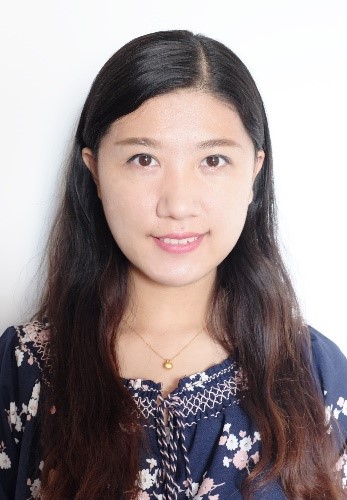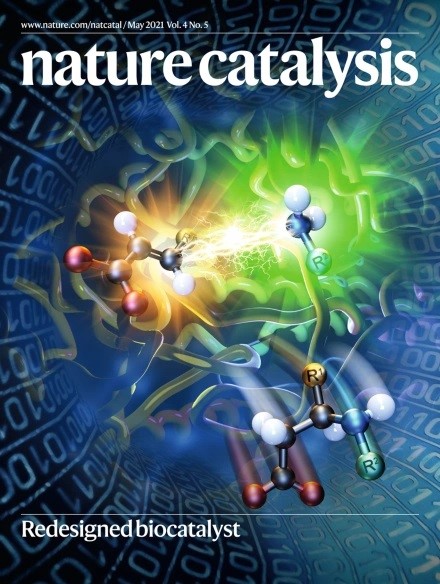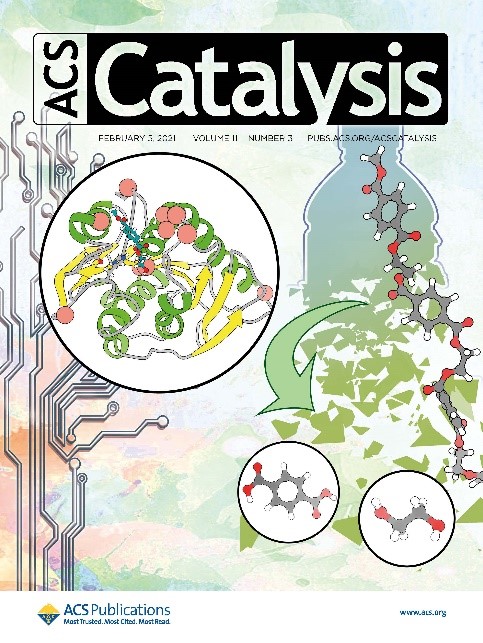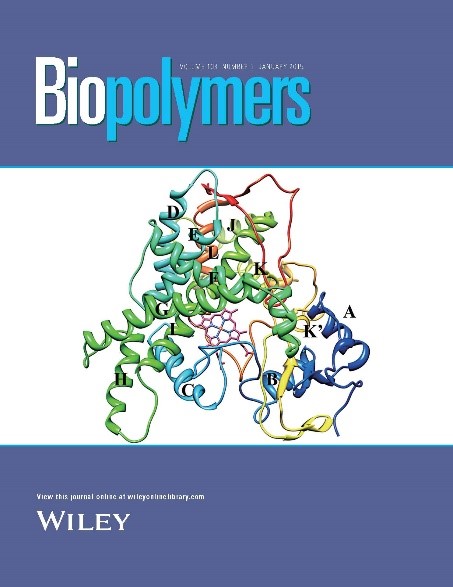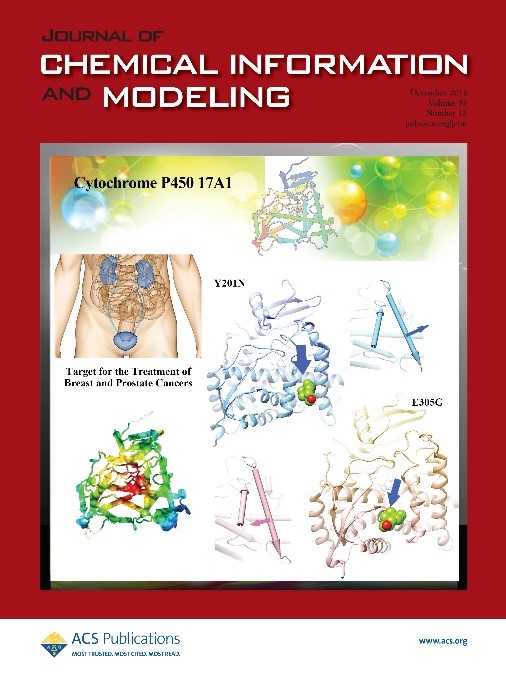|
崔颖璐 博士 副研究员 |
|
研究方向 计算机蛋白质设计
研究内容
主要研究方向为基于人工智能的微生物催化元件挖掘、机理解析、酶工程改造等。尤其是近年来,将蛋白质计算机设计的前沿方法引入非天然多聚物的生物降解研究中,促进了PET等塑料高分子的循环经济发展。
|
|
导师简介
崔颖璐博士主要致力于生物催化相关的酶工程改造工作,目前在Nat. Catal.、ACS Catal.等国际主流学术刊物上发表SCI期刊论文30余篇,主持国家自然科学基金面上项目等科研项目,担任中国科学院青年创新促进会会员,中国毒理学会计算毒理学专业委员会委员。 电话:010-64806185 电子邮件:cuiyinglu#im.ac.cn(请将#换为@) 通讯地址:北京市朝阳区北辰西路1号院3号 邮政编码:100101 |
|
主要学习及工作经历
工作经历
2021.11 - 至今 中国科学院微生物研究所,副研究员 2017.5–2021.11 中国科学院微生物研究所,助理研究员 2015.7–2017.5 北京林业大学,博士后
学习经历
2010.9–2015.7 吉林大学理论化学研究所,博士学位 2006.9–2010.7 吉林大学化学学院,学士学位
|
|
承担项目
1. 中国科学院青年创新促进会会员,2022年-2026年 2. 国家自然科学基金面上项目,聚对苯二甲酸乙二酯(PET)塑料降解互补酶MHETase的机制解析及改造应用,2022年-2025年 3. 中国科学院战略生物资源能力建设项目,工业反应酶库,2020年-2021年 4. 国家重点研发计划“合成生物学”重点专项,新分子生化反应设计与核心生命途径重构子课题,2019年-2024年 5. 北京市自然科学基金青年科学基金项目,塑料降解酶智能化新酶构建及荧光纳米探针高通量筛选研究,2019年-2020年 6. 国家自然科学基金青年科学基金项目,靶向Bcl-2新型拮抗剂通过非典型结合域诱导抗凋亡功能转变分子机制的理论研究,2017年-2018年 7. 中国博士后科学基金面上项目,CYP2C19多态性及介导药物相互作用致不良反应机制研究,2016年-2017年
|
近年代表性研究论文(*通讯作者)
1. Zhu T#,Cui YL#, Geng WC, Liu GX, Jiang HF, Wu B*. Creating an Unusual Glycine-Rich Motif in a Peptide Amidase Leads to Versatile Protein C-Terminal Traceless Functionalization.ACS Catal.2022, 12, 13: 8019-8026. 2. Cui YL, Sun JY, Wu B*. Computational enzyme redesign: large jumps in function.Trends Chem.2022, 4(5): 409-419. 3. Cui YL#, Wang YH#, Tian WY#, Bu YF, Li T, Cui XX, Zhu T, Li RF, Wu B*. Development of a versatile and efficient C-N lyase platform for asymmetric hydroamination via computational enzyme redesign.Nat. Catal.2021, 4(5): 364-373.
4. Cui YL#, Chen YC#, Liu XY, Dong SJ, Tian YE, Qiao YX, Mitra R, Han J, Li CL, Han X, Liu WD, Chen Q, Wei WQ, Wang X, Du, Tang SY, Xiang H, Liu HY, Liang Y, Houk KN, Wu B*. Computational redesign of a PETase for plastic biodegradation under ambient condition by the GRAPE strategy.ACS Catal.2021, 11(3): 1340-1350.
5. Mu QX#,Cui YL#, Tian YE, Hu MR, Tao Y, Wu B*. Thermostability improvement of the glucose oxidase fromAspergillus nigerfor efficient gluconic acid production via computational design.Int. J. Biol. Macromol.2019, 136: 1060-1068. 6. Zheng XX#,Cui YL#, Li T, Li RF, Guo L, Li DF, Wu B*. Biochemical and structural characterization of a highly active branched-chain amino acid aminotransferase fromPseudomonassp. for efficient biosynthesis of chiral amino acid.Appl. Microbiol. Biotech.2019, 103(19): 8051-8062. 7. Li T#,Cui YL#, Wu B*. Molecular dynamics investigations of structural and functional changes in Bcl-2 induced by the novel antagonist BDA-366.J. Biomol. Struct. & Dyn.2019, 37(10): 2527-2537. 8. Bu YF#,Cui YL#, Peng Y, Hu MR, Tian Y’E, Tao Y,Wu B*. Engineering improved thermostability of the GH11 xylanase fromNeocallimastix patriciarumvia computational library design.Appl. Microbiol. Biotech.2018, 102(8): 3675-3685. 9. Gao P,Cui YL*, Wu RL*.Molecular dynamic modeling of CYP51B in complex with azole inhibitors.J. Biomol. Struct. & Dyn.2018, 36(6): 1511-1519. 10. Cui YLand Wu RL*. Molecular Dynamics Investigations of Membrane-Bound CYP2C19 Polymorphisms Reveal Distinct Mechanisms for Peripheral Variants by Long-Range Effects on the Enzymatic Activity.Mol. Biosyst. 2017, 13(6): 1070-1079. 11. Cui YL,Xu F, Wu RL*. Molecular dynamics investigations of regioselectivity of anionic/aromatic substrates by a family of enzymes: a case study of diclofenac binding in CYP2C isoforms.Phys. Chem. Chem. Phys. 2016, 18(26): 17428-17439. 12. Cui YL, Xue Q, et al. Structural Features and Dynamic Investigations of the Membrane-Bound Cytochrome P450 17A1.BBA-Biomembranes2015, 1848(10): 2013-2021. 13. Cui YL, Zheng QC, et al. Molecular Basis of the Recognition of Arachidonic Acid by Cytochrome P450 2E1 along Major Access Tunnel.Biopolymers2015, 103(1): 53-66.
14. Cui YL, Zheng QC, et al. Molecular Dynamic Investigations of the Mutational Effects on Structural Characteristics and Tunnel Geometry in CYP17A1.J. Chem. Inf. Model. 2013, 53(12): 3308-3317.
15. Cui YL,Zhang JL, et al. Structural and Dynamic Basis of Human Cytochrome P4507B1: A Survey of Substrate Selectivity and Major Active Site Access Channels.Chem. Eur. J.2013, 19(2): 548-556.
|
|
|

